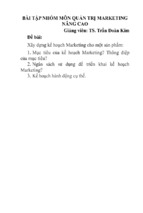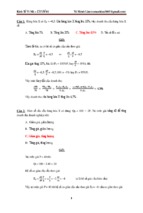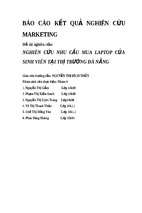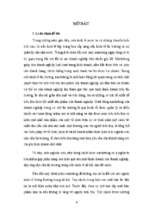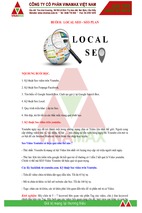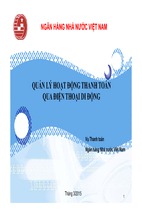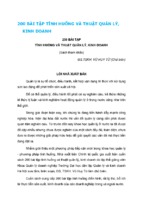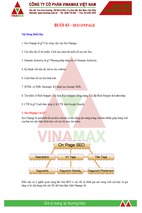Trade—the Engine
o f Growth in East Asia
This page intentionally left blank
Trade—the Engine
of Growth in East Asia
Peter C.Y. Chow
Mitchell H. Kellman
New York Oxford
OXFORD UNIVERSITY PRESS
1993
Oxford University Press
Oxford New York Toronto
Delhi Bombay Calcutta Madras Karachi
Kuala Lumpur Singapore Hong Kong Tokyo
Nairobi Dar es Salaam Cape Town
Melbourne Auckland Madrid
and associated companies in
Berlin Ibadan
Copyright © 1993 by Oxford University Press, Inc.
Published by Oxford University Press, Inc.
200 Madison Avenue, New York, New York 10016
Oxford is a registered trademark of Oxford University Press
All rights reserved. No part of this publication may be reproduced,
stored in a retrieval system, or transmitted, in any form or by any means,
electronic, mechanical, photocopying, recording, or otherwise,
without the prior permission of Oxford University Press.
Library of Congress Cataloging-in-Publication Data
Chow, Peter C. Y.
Trade, the engine of growth in East Asia / by Peter C. Y. Chow and Mitchell H. Kellman.
p. cm. Includes bibliographical references and index.
ISBN 0-19-507895-0
1. East Asia—Commerce—History.
2. Exports—East Asia.
I. Kellman, Mitchell H. II. Title.
HF3820.5.C48 1993
382'.0951—dc20
92-27965
987654321
Printed in the United States of America
on acid-free paper
In Memory of Irving B. Kravis
This page intentionally left blank
Preface
The four East Asian newly industrializing countries (NICs)—Hong Kong, Korea,
Singapore, and Taiwan—succeeded in defying the vicious circle of poverty in the
last quarter of this century and emerged as dynamic and rapidly growing open
economies. Their success was so remarkable that it has generated a series of heated
debates as to whether their development experience might be replicated by other
developing countries.
The aim of this book is to reveal the sources of economic growth by analyzing the
underlying mechanisms and interrelationships of this export success. We begin our
analysis by utilizing the concept of revealed comparative advantage. Using Japan's
trade performance as a benchmark, we examine whether the four NICs have gained
on or fallen further behind Japan.
The trade patterns of the four East Asian NICs are carefully examined using a
unique set of consistent trade data spanning a full twenty-five years, from the early
"take-off" period of the mid-1960s, to the early 1990s. The export performance of
each NIC is compared with that of the other as well as with that of Japan. The major
OECD markets—the United States, the EC, and Japan—are examined successively.
The responsiveness of their exports to external factors (e.g., world demand, trade
protection patterns) as well as internal factors is studied. Not only are detailed
product groups examined but such economic factors as specific product characteristics and embodied factor contents are explored. Economic theories, both classic
and modern, are utilized to place the observed developments in perspective and to
provide a sensible framework for understanding the "miracle of the NICs." The
important issues of intra-industry trade and NIC import-export relationships are
examined, and imports and exports of specific products are forecast.
We wish to thank the members of the Economics Discussion Seminar of the Economics Department at The City College of the City University of New York and the
Seminar on Applied Economics at the Graduate Center, CUNY, for useful input. In
addition, we wish to thank Bob Lipsey at the National Bureau of Economic Research and Ramon Myers at the Hoover Institution for helpful comments on earlier
drafts of this book. Thanks also go to the anonymous readers at Oxford University
viii
Preface
Press. Of course, the usual caveat applies: the final form of this book is based solely
on our own decisions.
We also wish to express our gratitude to the Schwager Fund, the PSC-CUNY
Research Award Program for financial support. Moreover, we fully acknowledge
that without the assistance of the Pacific Cultural Foundation this book could not
have been completed. Again, the views expressed in this book are ours alone.
Finally, we must acknowledge the tireless and capable research efforts of Mr.
Deogjin Jang.
New York
July 1992
P.C.Y.C.
M.H.K.
Contents
1. Anatomy of Success, 3
Export Expansion and Industrialization, 4
Trade as an Engine of Success in the NICs, 5
Significance of the East Asian Development Model, 6
Anatomy of Success, 7
Organization of This Book, 8
Summary, 9
Notes, 11
References, 11
2. The Comparative Advantage of the NICS, 13
Methodology and Qualifications Regarding the
Revealed Comparative Advantage, 13
Development of the Revealed Comparative Advantage in the
OECD Market, 75
The Dynamics of Changing Comparative Advantage in the
NIC-OECD Market, 77
Competitiveness Versus Complementarity in the NICs'
Exports in the OECD Market, 79
Summary, 27
Appendix Table 2.1: Classification of 13 Product Groups by
Three-Digit SITC, 22
Notes, 22
References, 22
3. The Sources of Export Growth, 24
The "Take-off," 1965-1973, 27
The Recession Decade, 1973-1982, 30
Recession Versus Expansion in the 1970s, 32
The 1980s, 35
x
Contents
Appendix Table 3.1: Annual Constant Market Share Analysis
Among the Four NICs, 1965-1990, 36
Appendix Table 3.2: Cumulative Five-Year Constant
Market Share Analysis, 38
Notes, 39
References, 39
4. Export Patterns: Who's Ahead? 40
Similarities with Japan, 40
The Dynamics of the Shifts in Comparative Advantage:
Settling the Paradox, 41
Leaders and Laggers: Another Look, 52
Summary, 57
Notes, 62
References, 62
5. Theoretical Underpinnings of Success, 63
Product Characteristics Embodied in NIC Exports, 64
The Proportion of Consumer Goods in the Export Mix:
The Consumer Ratio, 67
Two Measures of Human Capital: Wage per Worker and the Skill Ratio, 71
Product Cycle Theory: Evidence of Shifting to
Stage 5—R&D-Intensive Exports, 74
Results of Stepwise Regression, 76
Summary, 79
Notes, 81
References, 82
6. Coping with OECD Protectionism, 84
Product Characteristics Versus Geographic Origination, 86
The Regression Model, 87
Summary, 89
Notes, 90
References, 90
1. Balancing Imports and Exports with OECD, 92
The Relationship Between Imports and Major Export Categories, 98
Intra-Industry Trade: A First Look, 700
Imports and the Most Rapidly Growing Exports, 101
Critical Imports, 702
Frequency Count of Import Categories with High
Correlations with Rapidly Growing Export Categories, 108
Contents
Appendix Table 7.1: Number of Top Growth Exports with Which Each
Imported Product Was Highly Correlated, 1966-1977, 108
Appendix Table 7.2: Number of Top Growth Exports with Which Each
Imported Product Was Highly Correlated, 1979-1987, 110
Notes, 112
References, 112
8. The Comparative Homogeneity of the East Asian NIC Exports of
Similar Manufactures, 113
The Empirical Test, 114
The Test for Specific Product Categories, 775
Discussion, 776
Appendix Table 8.1: Product Group Classifications (SITC RV 1), 720
Notes, 722
References, 722
9. Intra-Industry Trade: Diversification Versus Specialization, 124
Intra-Industry Changes in Export Specialization:
The Disaggregated Product Sample, 726
Inter-Industry Changes in Export Specialization:
The Aggregate Industry Sample, 727
The Balassa Versus the Ricardo Explanation of Specialization Trends, 757
Intra-Industry Trade: Implications for Future Trade Trends, 135
NIC-Intra-Industry Trade: The Recent Record, 736
Factors Underlying NIC-Intra-Industry Trade, 737
Summary, 742
Appendix Table 9.1: Intra-Industry Indices—All NICs and
Markets, 1965-1990, 143
Notes, 144
References, 144
10. The Next-Tier NICs: Tomorrow's Miracles? 145
A Comparison in Rankings of RCAs Between the NICs and ASEAN, 746
Dynamic Growth and Trade Diversification, 749
Summary, 757
Notes, 752
Reference, 752
11. Prospects in OECD Markets, 153
The International Economic Environment: Into the 1990s, 754
The Macrostructure of the NICs in the 1990s, 755
xi
xii
Contents
Projections of Export Competitiveness to the Year 2000, 757
Projections of NIC Export Competitiveness in the OECD Market, 163
Toward Full Membership in the OECD Countries, 766
Notes, 76S
References, 768
Index, 170
Trade—the Engine
of Growth in East Asia
This page intentionally left blank
1
Anatomy of Success
Spectacular economic performance in East Asia has had a profound influence on
economic development and the world economy in the past quarter century. Rapid
economic growth and the accompanying expansion of exports in Hong Kong, South
Korea (henceforth Korea), Taiwan, and Singapore in the past two and a half decades
have succeeded in defying the vicious circle of poverty in the post-World War II
era. This success story is of great interest not only to development economists but
also to political leaders and policymakers who are concerned with economic development.
As Anne Krueger pointed out, "[They] have demonstrated that poor societies can
substantially transform their economies and alter their prospects. They have also
demonstrated that rapid growth can be consistent with rapidly rising living standards
for the poorest segments. As such, their experience provides a basis for optimism
about future prospects of developing areas where authorities are committed to
raising living standards of the population."1 In this book we offer several explanations for this success.
Following in the footsteps of Japan, the four newly industrializing countries
(NICs)—Hong Kong, Korea, Taiwan, and Singapore—have been extremely successful in adopting export-oriented policies to stimulate their economic growth and
industrial development. As evidenced by the statistics of the International Monetary
Fund (IMF) and the Organization of Economic Cooperation and Development
(OECD), the share of their exports in world trade has more than doubled between
the mid-1960s and the 1980s. The momentum of their export growth weathered bad
as well as good times with unexpected resilience and durability. During the prosperous 1960s, all of the East Asian NICs enjoyed high economic growth rates,
typically in double digits—a record considerably higher than any other region of the
world. During the oil-shocked 1970s, amid world recession and the apparent collapse of their major industrialized markets, the NICs maintained a satisfactory
performance of 6% to 8% growth. Their economic performance not only exceeded
the average of the mature economies in the OECD countries; it also exceeded those
of the upper-middle-income countries—the country group to which they belong,
according to the criteria of the World Bank.
Table 1.1 indicates the average annual growth rates of gross domestic product
3
4
Table 1.1
Trade—the Engine of Growth in East Asia
Selected Economic Indicators for the NICs' Average Annual Growth Rate (%)
GDP
Hong Kong
Korea
Singapore
Taiwan
Japan
OECD
Upper-middle-income
countries
Export
Import
1965-80
1980-89
1965-80
1980-89
1965-80
1980-89
8.6
9.9
10.0
9.9
6.6
3.8
7.1
9.7
6.1
8.0
4.0
3.0
9.1
6.2
13.8
8.1
8.3
27.2
4.7
15.6
11.4
7.3
15.2
11.0
10.4
13.4
12.2
4.6
4.1
4.9
4.2
5.8
9.6
5.4
5.1
6.8
3.2
8.5
5.7
5.8
1.6
7.0
Sources: World Development Report, 1991 (Washington, D.C.: World Bank); Taiwan Statistical Data Book, 1990
(Taiwan: CEPD).
(GDP), exports, and imports of the NICs. For comparison', the figures for Japan,
OECD, and other upper-middle-income countries are also provided.
EXPORT EXPANSION AND INDUSTRIALIZATION
Economic growth in these countries was associated with and "driven" by the twin
processes of industrialization and export expansion.2 In the early 1950s agricultural
commodities accounted for more than 90% of Taiwanese exports. By 1990 the share
of agricultural commodities from Taiwan had dropped to less than 10% while that of
manufactured products accounted for more than 90% of total Taiwanese exports. At
the end of the Korean conflict in the mid-1950s, when the expansion of Korean
exports began, wigs made from human hair became the first major successful export
item. Today, Korean automobiles and computers flood the United States and other
OECD markets. The same phenomenon typified the experience of Singapore and
Hong Kong. The two city-states, possessing virtually no natural resources, overcame this disability by first developing labor-intensive manufactured products in the
1960s, then gradually promoting more technology-intensive products in the 1970s
after the first oil shock. Their success stories established a new conventional
wisdom in the area of trade and development, highlighting the possibility for developing countries to simultaneously promote export growth and industrial development. Table 1.2 indicates the structural transformation of the economies in the
NICs; Table 1.3 illustrates the shift of the commodity composition of their exports.
From Table 1.2 it is clear that the economic structures in Korea and Taiwan were
substantially transformed from an agrarian base to economies concentrated in secondary and tertiary industries. The city-state of Hong Kong also shifted toward a
predominance of services as its exports surged in the world market. From Table 1.3
it is clear that during that same period the commodity composition of exports in the
NICs, except for Hong Korig, continually shifted from a predominance of primary
commodities to more technology-intensive products such as machinery and transport equipment along with other manufactured products. Peter Chow has demonstrated, through the use of rigorous econometric techniques, that the unique pattern
5
Anatomy of Success
Table 1.2
Distribution of NICs' Gross Domestic Products (%)
Agriculture
Hong Kong
Korea
Singapore
Taiwan
Industry
Manufacturing
Services
1965
1989
1965
1989
1965
1989
1965
1989
2
38
3
27
0
10
0
6
40
25
24
29
28
44
37
44
24
18
15
20
21
26
26
36
58
37
74
44
72
46
63
51
Sources: World Development Report, 1991 (Washington, D.C.: World Bank); Taiwan Statistical Data Book, 1990
(Taiwan: CEDP).
Table 1.3
Product Structure of NIC Merchandise Exports
Other
Primary
Commodities
Fuels,
Minerals,
Metals
Hong Kong
Korea
Singapore
Taiwan
Machinery
Transport
Equipment
Other
Manufacturing
Textile
Clothing
1965
1989
1965
1989
1965
1989
1965
1989
1965
1989
1
15
21
1
1
2
5
34
44
54
2
15
9
5
7
3
10
4
23
87
58
24
15
73
52
24
6
26
39
29
5
22
18
0
19
47
38
59
26
35
Sources: World Development Report, 1991 (Washington, D.C.: World Bank); Taiwan Statistical Data Book, 1990
(Taiwan: CEPD).
Note: Product classification for Taiwan may not be totally consistent with other countries.
of simultaneous development of industrialization and compositional shift of exports
in the Asian NICs represents a reciprocal, bidirectional causality.3
TRADE AS AN ENGINE OF SUCCESS IN THE NICS
The success of the NICs, individually or collectively, is documented in a voluminous literature.4 Some scholars explain the success by focusing on historical and
external political factors such as the role of Japan's colonial policies in Korea and
Taiwan,5 or the contributions of U.S. aid and foreign capital in promoting economic
development in these countries.6 Others tend to focus on institutional aspects of the
respective economic systems; the laissez-faire economy of Hong Kong versus authoritarian rule in Singapore; loose, indicative planning in Taiwan versus active
government control or credit rationing in Korea.7 Some identify the major source of
the NICs' success in various sociological factors, such as the cultural heritage of
Confucian ethics. Others cite structural factors, such as equitable land distribution,
as crucial explanations for the region's remarkable economic success.8 Still other
writers focus on the international diffusion and borrowing of technologies.9
Although many of these explanations are not mutually exclusive, practically all
recognize the important contributions of export expansion to the observed development success.
6
Trade—the Engine of Growth in East Asia
As argued by I.M.D. Little,
the major reasons [for their success] is their labor-intensive export-oriented policies. . . .
Nothing else can account for it. Taiwan and Korea do not have very good capital markets.
Their tax systems are not very good. . . . Planning . . . has not played a key role. Moreover, the nonhuman resources of Taiwan and Korea are not notably favorable to high
income or growth. . . . Luck has played little part in their development. Aid was ... not
important during the high growth period. Borrowing has remained very important for
Korea but not for the others. Private foreign investment has played a major role in
Singapore; though elsewhere it has played a useful but only minor role.10
Therefore, one might conclude that exports matter for growth, though not only
exports. While much of the economic literature attempts to identify and evaluate the
underlying contributive forces fueling the economic performance of the NICs,11
very little work has focused on the critical issue of the sources and concomitants of
their export growth. Thus in this book we hope to make a significant contribution to
the understanding of the miracle of the NICs by rigorously examining their rapid
export expansion in the past quarter century.
SIGNIFICANCE OF THE EAST ASIAN DEVELOPMENT MODEL
By the end of the 1980s the four Asian NICs accounted for more than 50% of total
manufactured exports from all developing countries while their population totaled
less than 3% of the population of developing countries.12 Indeed, very few developing countries have succeeded in expanding their exports to the industrialized countries as the Asian NICs have; other less-developed countries (LDCs), such as the
members of the Organization of Petroleum Exporting Countries (OPEC), have also
"succeeded" in this way, but their experience clearly cannot be duplicated by the
world's developing countries. On the other hand, the success story of the Asian
NICs has generated much enthusiasm in many developing countries seeking operational benchmarks to map out their development strategies.
In fact, the achievement of the East Asian NICs has aroused much theoretical
debate over whether their development experience—that is, the export-led growth
strategy—can be generalized and adopted as a model for development by other
developing countries.13 Whether a global universal solution to the world's poverty
problem can be achieved by replicating the East Asian model of development
remains moot, but as the debates and controversies rage, a large group of poor
countries—many members of the Association of South East Asian Nations
(ASEAN)—are today consciously following in the footsteps of the NICs.
After more than two decades of steady growth exceeding 5% a year, the ASEAN
countries of Malaysia, Thailand, the Philippines, and Indonesia have increasingly
become recognized as the "next-tier," "near," or "new" NICs. A somewhat less
scholastic yet generally more popular label for the East Asia NICs is the four "little
tigers," "little dragons," or the "Gang of Four," whereas the ASEAN four are often
designated as the "baby tigers." Implicitly or explicitly, the big tiger is Japan with
its dominant position in world trade and the dominant role model it presents as the
East Asian success story of the post-World War II era.
Anatomy of Success
1
Given this phenomenal development in East and Southeast Asia, an unmistakable
momentum of Pacific dynamism has already altered the international division of
labor and the structure of world trade. Since the mid-1980s, two-way trade between
the United States and Pacific Basin countries has exceeded the traditional transAtlantic trade flows. The U.S. economy has become increasingly integrated with
those in the Pacific Basin countries. S. B. Linder argued that if the current trend of
relatively faster growth continues for another decade, then the twenty-first century
would become a Pacific century. In addition to placing the growth momentum of the
East Asian NICs into a global context, Linder further reiterated the role of foreign
trade in East Asian development. He concluded that no observer of the NICs could
possibly doubt the critical role played by the rapid growth of exports, that is, the
adoption of export-oriented strategies to sustain the steady state of growth between
1965 and 1985.14
ANATOMY OF SUCCESS
The study of the NICs' export success is crucial for a clear understanding of the
mechanisms and strategies that proved so useful and successful in generating the
"miracle" of the NICs. In fact, the opening up of economies to international trade
and investment is one of four top priorities for action in developing countries set by
the World Bank (the other three are investment in human capital, improvement in
the climate for enterprise, and institution of appropriate macroeconomic policy).15
By analyzing the NICs' success in export, we hope to offer important transferable
lessons for many other LDCs in their struggle for development. In this regard, this
book does not merely report case studies of the unique successes of the four little
tigers. The studies undertaken carry important lessons in the general area of trade
and development. We of course recognize that nurturance of human capital, governmental support for infrastructures, liberalization of financial institutions, and basic
macroeconomic stability are of great importance to economic development. However, in our judgment, the export drive of the NICs co1 itutes the major feature and
causal factor explaining why the NICs succeeded in breaking their particular vicious
circles of poverty in such a short time.16 Therefore, this book focuses on the sources
of trade growth in the NICs and the relationship between the growth of trade and
their concurrent and subsequent economic growth.
In devoting this book to an investigation of the export success of the NICs, we
analyze the export growth of the NICs in a global context. This context is introduced
by a comparison of their export structures with Japan's in an intertemporal, dynamic
context. A set of statistical analyses based on the revealed comparative advantages
(RCA) and export similarity indices is conducted to evaluate whether they were
chasing after Japan and if so, how. To identify the source of their export success—
the choice of the right industries (i.e., those enjoying rapidly growing world demand) or the right market destination (focusing on nonstagnant world markets)—
we apply constant market share (CMS) analysis.
We go on to analyze whether the next tier of NICs—the ASEAN—are following
the ladder of dynamic comparative advantage in the world economy. The likelihood
- Xem thêm -

